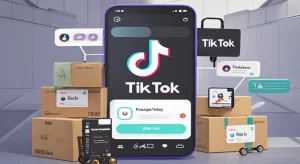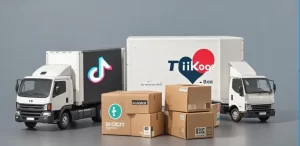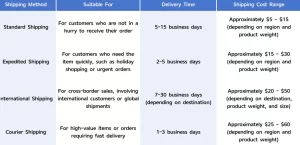2. How to Optimize Delivery Times?
To get customers their desired products as quickly as possible, sellers need to optimize delivery times from multiple angles. First, choosing the right logistics partner is crucial. Partnering with experienced and fast logistics companies can significantly improve order fulfillment efficiency. For example, TikTok offers many reliable logistics partners. By selecting these service providers, your packages are more likely to arrive on time, preventing delays caused by logistical issues.

Here are some key TikTok logistics partners:
● DHL
DHL is one of the world’s leading logistics companies, providing fast and reliable international and domestic shipping services. It is ideal for sellers needing cross-border delivery, supporting shipments from locations like China and the US to many regions worldwide.
● FedEx
FedEx offers a full range of shipping services, including domestic and international express delivery. Known for its speed and service quality, it is suitable for e-commerce sellers, especially for high-value goods that require quick delivery.
● UPS
UPS is another global logistics giant, focused on providing flexible courier and shipping services. Through integration with TikTok, sellers can easily manage their order deliveries.
● Royal Mail
As the UK’s primary postal and courier service provider, Royal Mail is the first choice for many UK sellers. It offers various delivery options from local to international, ideal for sellers shipping within the UK.
● China Post
For sellers shipping from China, China Post offers economical international postal services. While delivery times are longer, it is a cost-effective option, especially for smaller or lighter products.
Another tip is to use localized warehouses. Having a warehouse closer to your target market can reduce shipping time and cost, especially when fulfilling domestic orders.
3. Delivery Times and Customer Experience
Delivery time and customer experience are closely linked—almost inseparable. Imagine placing an order, only to wait several weeks for it to arrive. Not only would that make you anxious, but it could also cause doubts about the seller’s overall service. On the other hand, fast delivery creates a positive impression, making customers feel the store is reliable, the service is excellent, and the overall shopping experience is top-notch. This can lead to repeat business and happy customers.
Especially on a social platform like TikTok, customer feedback spreads quickly. If delivery is slow, customers will quickly share their dissatisfaction in the comment section, which can harm your shop’s reputation. So, ensuring fast delivery not only increases customer satisfaction but also encourages repeat customers and positive reviews, helping expand your brand’s reach. Some customers might even share their excitement about receiving their packages, becoming brand ambassadors in the process! This is exactly what every e-commerce seller hopes for.
4. TikTok Shop’s Delivery Time Advantages
TikTok Shop leverages its strong platform to connect sellers with global customers quickly while enhancing delivery efficiency. By using TikTok’s logistics partners, sellers can ensure that their packages reach customers swiftly and securely. TikTok is also dedicated to improving delivery processes and reducing unnecessary delays.
One of the best features is the order tracking function, which allows customers to track their packages in real time, keeping them informed about the delivery progress. This feature not only gives customers a greater sense of control but also boosts their satisfaction with the shopping experience. If any issues arise during transit, customers can contact the seller through the platform, ensuring that the transaction is completed smoothly.



 10 min read
10 min read






